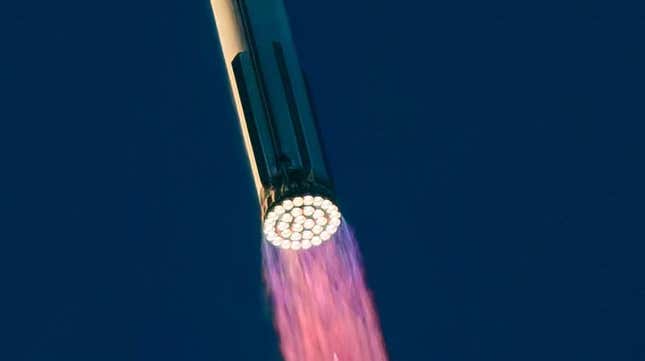The Federal Aviation Administration (FAA) has closed its investigation into the second Starship take a look at flight, which SpaceX carried out on November 18, 2023. With the inquiry concluded, SpaceX is now on observe to advance its program, pending the required fixes.
Orbital Check Flight 2 (OFT-2) was a substantial enchancment over the primary take a look at, carried out on April 20, 2023, which resulted in considerable damage to the launch pad and the surrounding area in addition to the loss of the Starship rocket some four minutes into the flight. Nonetheless, OFT-2, which witnessed the in-flight destruction of both the Super Heavy booster and upper stage, prompted an FAA investigation.
As per the regulator’s pointers, SpaceX led the mishap investigation, with the FAA preserving an in depth watch on the method to make sure compliance. The aerospace firm recognized the basis causes of the failed take a look at, leading to 17 corrective actions, a few of which have already been applied. Starship, nonetheless in growth, is a totally reusable spacecraft and rocket system designed for missions to Earth orbit, the Moon, Mars, and different places within the photo voltaic system, and it’s set to noticeably remodel the aerospace trade.
Associated article: The Definitive Guide to SpaceX’s Starship Megarocket
This growth means SpaceX is now a significant step nearer to the third take a look at flight. However because the FAA made clear in its emailed assertion, the “closure of the mishap investigation doesn’t sign a right away authorization of the subsequent Starship launch.” For that to occur, SpaceX “should implement all corrective actions and obtain a license modification from the FAA that addresses all security, environmental and different relevant regulatory necessities.” That stated, a take a look at flight in March is just not out of the query.
A uncommon update from SpaceX supplied extra details about the investigation and what went incorrect throughout OFT-2.
Following stage separation, and because the booster started its descent stage, “a number of engines started shutting down earlier than one engine failed energetically,” leading to a sequence of occasions that finally resulted within the destruction of the Tremendous Heavy, the corporate defined. SpaceX recognized filter blockage because the wrongdoer, by which oxygen-rich liquid from the engines clogged the filters. This led to the shutdown of a number of engines and an explosion about three and a half minutes into the flight, whereas Starship was flying 56 miles (90 kilometers) over the Gulf of Mexico. SpaceX claims to have already applied a repair.

As for the higher stage, it managed to free itself from the booster and fly for practically seven minutes. Then, as a part of the take a look at, it vented further liquid oxygen that was loaded for knowledge assortment functions (this usually wouldn’t be carried out throughout a launch). Nonetheless, a leak occurred throughout this venting, inflicting a hearth and lack of communication with the flight computer systems. This led to the engines shutting down early and the self-destruct system ending the mission. The take a look at ended because the higher stage reached an altitude of 93 miles (150 km), marking the primary time a Starship automobile reached outer area. To stop a recurrence, SpaceX has “applied {hardware} modifications on upcoming Starship autos to enhance leak discount, hearth safety, and refined operations related to the propellant vent to extend reliability.” What’s extra, a shift from the hydraulic steering of Raptor engines to an completely electric-based system also needs to take away “potential sources of flammability,” SpaceX added.
Of the 17 corrective actions recognized, seven pertained to the Tremendous Heavy booster, together with redesigns of car {hardware} and enhancements in management system modeling, with the remaining ten corrective actions associated to the higher stage.
All that stated, it will be unfair to label OFT-2 as a complete failure, as a number of key milestones had been achieved. These embrace the profitable stage separation and the execution of the primary sizzling staging maneuver—an unprecedented feat for a rocket of this dimension. Moreover, all 33 Raptor engines efficiently ignited throughout liftoff, in an necessary demonstration of reliability. Lastly, the water deluge system labored as supposed, enjoying a vital position in defending the launch mount from the extraordinary forces and warmth of the rocket throughout its ascent.
Associated article: SpaceX May Test Key Technique for Moon Mission on Starship’s Third Flight
For the third take a look at, SpaceX plans to introduce a number of new options, together with the aforementioned electrical steering system for the upper-stage Raptors. The corporate additionally goals to expedite propellant loading earlier than launch and take a look at in-flight gasoline switch inside the rocket, as part of a NASA contract.
For extra spaceflight in your life, observe us on X (previously Twitter) and bookmark Gizmodo’s devoted Spaceflight page.
Trending Merchandise















